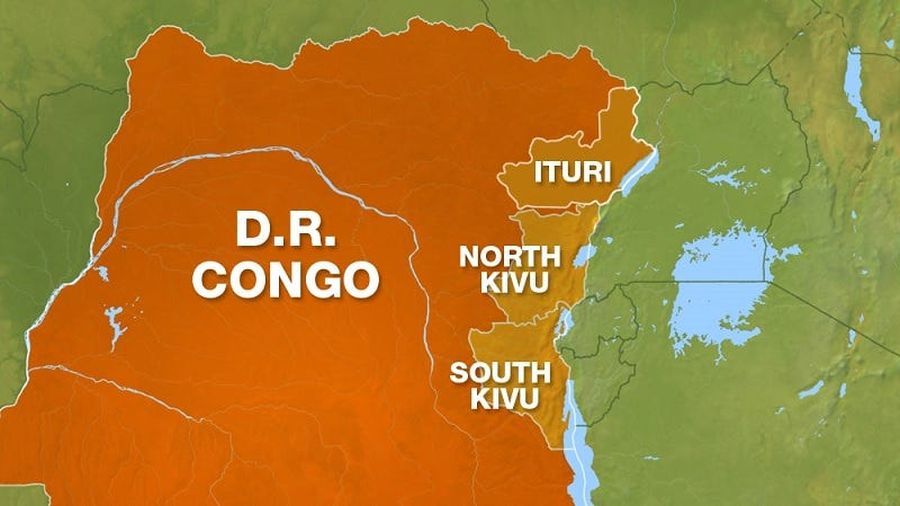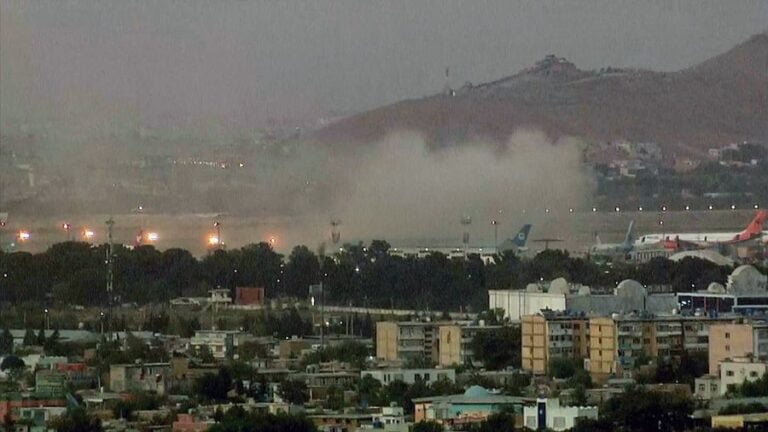A Quick Recap of the Latest Congolese Conflict
The international community has been so busy obsessing over the Ukrainian Conflict that all but those African members most directly involved in the latest Congolese Conflict pretty much remain unaware of what could end up being the continent’s next major war.
The Congo Wars at the turn of the century are infamous for resulting in the deaths of an estimated six million people, which most of the international community remains ignorant of to this day. The second one, whose legacy continues into the present, was also regarded as “Africa’s World War” due to the varying involvement of a hitherto unprecedented number of the continent’s countries in that conflict. It also deserves mention that the Democratic Republic of the Congo (DRC) supplies around 70% of the world’s cobalt that’s used in almost all modern-day communication, electronic, and green technologies.
These three reasons should be enough for the wider world to pay attention to the latest Congolese Conflict, which just escalated to include Kenya’s military involvement as part of a force comprised of the East African Community’s (EAC) members. This regional bloc includes those two countries, Burundi, Rwanda, South Sudan, Tanzania, and Uganda, all of which with the exception of Rwanda and Tanzania are participating in the latest mission in this group’s newest member. Tanzania generally stays out of regional conflicts while Rwanda is accused of being a direct antagonist in the present one.
To oversimplify the state of affairs, Rwanda – which twice invaded what’s now the DRC (formerly Zaire) during the two Congo Wars – is once again accused by Kinshasa of masterminding yet another intervention, albeit this time under the cover of the M23 rebel group mostly comprised of Tutsis. That organization previously took over the regional capital of the DRC’s far-flung Rwandan-neighboring North Kivu province early last decade before being beaten back but has once again risen as a threat. It claims to protect fellow co-ethnics that are indigenous to the region as well as those who previously fled and migrated there.
Most observers agree that M23 is militarily supported by Rwanda, whose post-Civil War leadership is thought to support regional Tutsi causes after coming to power following their country’s infamous 1994 genocide. Kigali has also been accused of exploiting such proxy forces for the purpose of clandestinely extracting the eastern DRC’s mineral riches, both charges of which its leadership has consistently denied. Bilateral ties have deteriorated so much in recent days to the point where the DRC expelled the Rwandan Ambassador and called on local youth to mobilize in the face of M23’s renewed threat.
BBC News reported that the EAC-led military mission will see its participants taking on different security roles: “Kenyan soldiers will focus on rebels in the North Kivu area where some of their counterparts are already embedded in the UN force. Ugandan troops will pursue the Allied Democratic Forces who are linked to the Islamic State in North Kivu and Ituri, and have staged attacks in Uganda. Burundian troops will concentrate in South Kivu, where they will battle the Tabara militia. South Sudanese forces will fight remnants of the Lord Resistance’s Army.”
Quite clearly, the DRC Armed Forces (FARDC per their French acronym) can’t handle the emerging conflict on its own, especially if it’s indeed the case that regional military powerhouse Rwanda is behind M23’s revival like many suspect. All the pieces are thus in place for making the latest crisis extremely combustible due to the multitude of state and non-state actors involved in the newest phase of this long-running conflict catalyzed by that group’s sudden return to prominence. If the crisis isn’t politically resolved, then it’s not difficult to imagine everything exploding into yet another “African World War”.
Rwanda is once again at the center of these complex processes’ dangerous confluence, hence why a few words should be shared about its regional role since the early 1990s. This country’s armed forces are regarded as among the most powerful in all of Africa, both in the conventional sense and also in terms of their suspected mastery of unconventional warfare (especially through proxies like the M23 is thought to be). Considering its dark history of genocide, it’s understandable why the Tutsi-led rebel movement that came to power after the Civil War is thought to support its co-ethnics’ regional causes.
Nevertheless, this seemingly well-intended advocacy (which its leadership always officially denied) has arguably resulted in further destabilizing the same region that it’s supposedly intended to help secure. The paradox is that Rwanda’s unilateral use of military force for ensuring its own security and that of some of its minority co-ethnics in the DRC actually exacerbates the same security threats that prompted it to unilaterally intervene in the first place. The resultant cycle has continued for several decades already and once again risks sparking a wider war.
While the preceding two paragraphs might make some think that Rwanda is solely to blame for the last few decades of conflict, the reality is that everything is actually a bit more complicated than that. Security dilemmas, resource interests, and minority co-ethnic advocacy certainly played a role in that country’s decision to military intervene in the DRC (both conventionally and unconventionally like it’s suspected of), but it should also be said the neighboring Uganda is thought to have similar such security and resource interests as well.
Moreover, there are also questions of state sovereignty and center-periphery relations at play when it comes to the DRC itself. On the one hand, there’s no denying that the DRC is a UN-recognized sovereign state with the right to defend itself from all forms of foreign meddling. On the other hand, however, there’s also no denying that center-peripheral relations – especially those involving the role of Tutsis, which includes those who are indigenous as well as those who previously fled and migrated there – are already combustible enough on their own without any foreign meddling required to make them explode, after which others’ interests could be threatened.
What’s happening nowadays in the Congo is that these factors – Uganda’s security dilemma and resource interests in the DRC; Rwanda’s own two such interests alongside its ruling party’s suspected advocacy of regional Tutsi causes; and the DRC’s vexing questions of state sovereignty and center-periphery relations – are once again dangerously converging. Just like during the Second Congo War, the regional alignment of military forces is also once again against Rwanda, which finds itself in the center of the latest conflict unlike during the First Congo War when it and Uganda were allies.
The international community has been so busy obsessing over the Ukrainian Conflict that all but those African members most directly involved in the latest Congolese Conflict pretty much remain unaware of what could end up being the continent’s next major war. This is regrettably not only for reasons of principle and morality connected to international law and the humanitarian consequences of such a worst-case scenario, but also for practical reasons related to the fact that any serious disruption of the DRC’s cobalt exports could affect the global economy.
The “Fourth Industrial Revolution”/”Great Reset” (4IR/GR) as well as the global green transition can’t proceed without reliable access to that indispensable mineral, thus meaning that an expansion of the latest Congolese Conflict into the DRC’s erstwhile Katanga region where most of this resource is located could disproportionately affect the whole world. That’s not to say that this will definitely happen, but just that precedent suggests that it can’t be discounted considering how combustible the DRC has traditionally been. Everyone should thus pay much closer attention to what’s happening there.








2 Comments